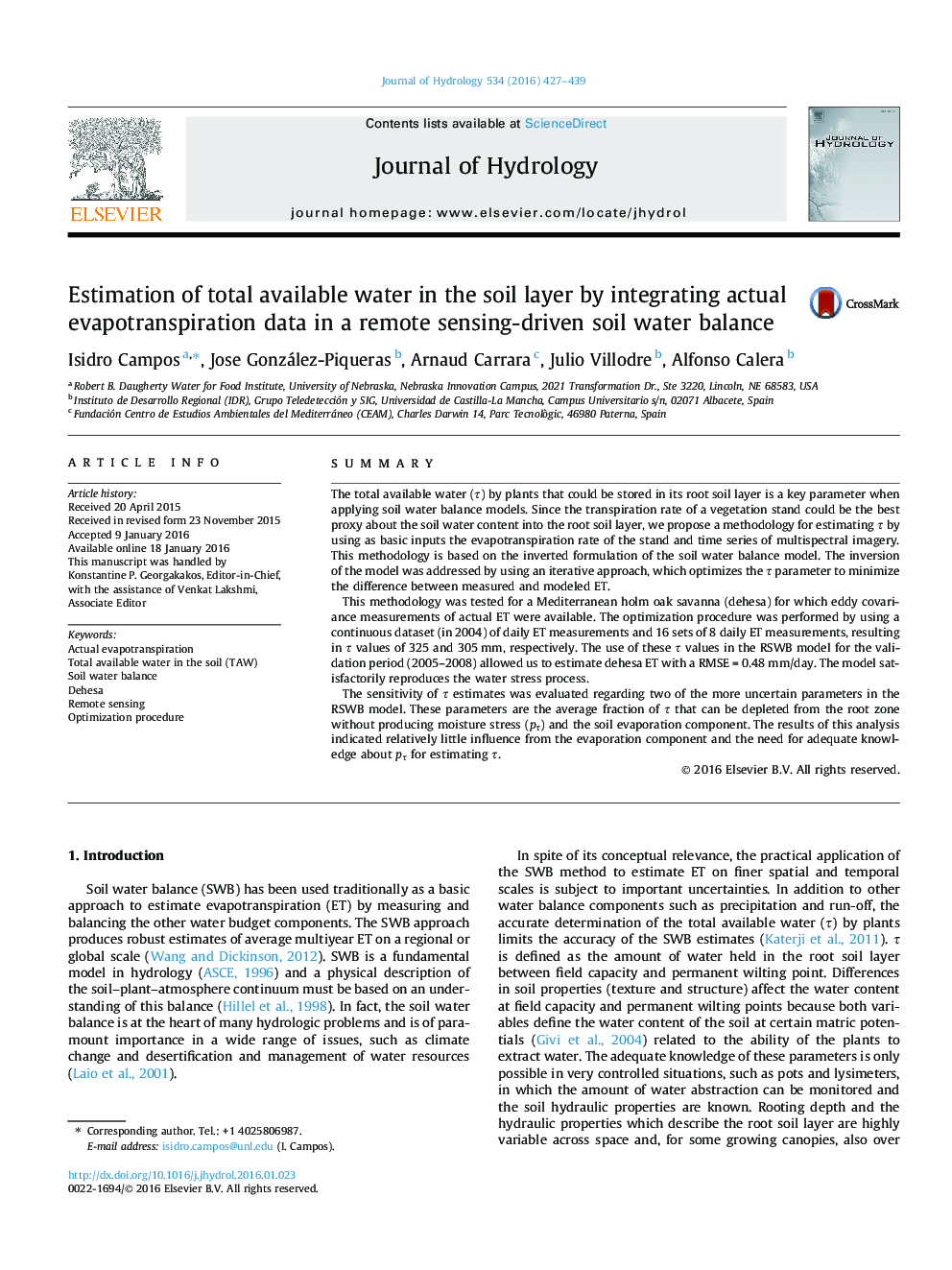| Article ID | Journal | Published Year | Pages | File Type |
|---|---|---|---|---|
| 6410361 | Journal of Hydrology | 2016 | 13 Pages |
â¢Total available water (Ï) must be known for the application of SWB models.â¢Ï can be estimated assimilating evapotranspiration data (ET) in SWB models.â¢After calibration, ET and water balance components can be estimated along time.
SummaryThe total available water (Ï) by plants that could be stored in its root soil layer is a key parameter when applying soil water balance models. Since the transpiration rate of a vegetation stand could be the best proxy about the soil water content into the root soil layer, we propose a methodology for estimating Ï by using as basic inputs the evapotranspiration rate of the stand and time series of multispectral imagery. This methodology is based on the inverted formulation of the soil water balance model. The inversion of the model was addressed by using an iterative approach, which optimizes the Ï parameter to minimize the difference between measured and modeled ET.This methodology was tested for a Mediterranean holm oak savanna (dehesa) for which eddy covariance measurements of actual ET were available. The optimization procedure was performed by using a continuous dataset (in 2004) of daily ET measurements and 16 sets of 8 daily ET measurements, resulting in Ï values of 325 and 305Â mm, respectively. The use of these Ï values in the RSWB model for the validation period (2005-2008) allowed us to estimate dehesa ET with a RMSEÂ =Â 0.48Â mm/day. The model satisfactorily reproduces the water stress process.The sensitivity of Ï estimates was evaluated regarding two of the more uncertain parameters in the RSWB model. These parameters are the average fraction of Ï that can be depleted from the root zone without producing moisture stress (pÏ) and the soil evaporation component. The results of this analysis indicated relatively little influence from the evaporation component and the need for adequate knowledge about pÏ for estimating Ï.
